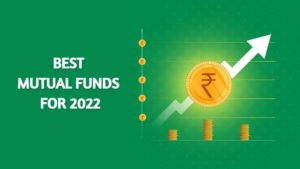Once you are aware of different type of mutual fund products you can select the best that suits you in terms of risk and return. How can you assess which mutual fund suits your requirements? Let’s find out.
There are various methods to assess the suitability of a MF scheme and all those methods need to be used in a coherent manner and not on a standalone basis. This is because assessing suitability on the basis of just one method may produce different results and may not give you a holistic picture and fails you in selecting right fund. So what are these methods?
These methods are as follows:
- Financial planning
- Risk profile assessment
- Asset allocation
Financial planning
Financial planning is a term used by almost all of the financial intermediaries now. But basically none of them provide financial planning in its true sense. They usually do goal planning, which is just one of the parts of financial planning and not financial planning as a whole. Financial planning is a comprehensive evaluation of an individual’s current and future financial situation by using the currently known things and certain assumptions to predict the future situation.
Financial planning involves –
- Risk planning,
- Investment planning,
- Estate or succession planning,
- Tax planning,
- Cash flow management and
- Financial goals planning
So, it is not just goals, but also certain other things that affect your personal finances. Financial planning involves setting up your financial goals which are to be achieved within certain tenure. While investing in mutual funds, it is very important to understand the time horizon for which you wish to invest. Say, for example, you have a goal which is three years away from now, then investment in equity is not recommended as minimum tenure of investment in equity is 5 years and above. This is because of the volatile nature of returns on equity in a shorter duration.
So, technically, investment in equity could be suggested for the financial goals having tenure of 8 years or more. Now, you might ask, why 8 years?
This is because it is wise to shift your investments in a safer avenue as you are nearing your goals. So, if you have a financial goal that is maturing in 8 years, then in the initial 5 years, major portion of the investments would be in equity and, in the remaining 3 years, investments should be shifted to the debt funds as it would help you to protect your capital and gains made in the equity schemes.
So, financial planning would help you decide the type of funds (equity or debt) to invest in.
For example, the current value of your future goal is Rs 10 lakh. Assuming an annual inflation of 6%, you would need around Rs 33,10,000 to achieve the goal after 20 years. You need to invest around Rs 3,400 every month to achieve the target after 20 years. We have assumed an annual return of 12% which only an equity mutual fund may offer you.
Do you have the risk appetite to invest in equity? If not, you have to invest in debt instruments to achieve your target. That means you have to take a lower return for your calculation.
Risk Profile
Risk profile is another major parameter that helps you understand which mutual fund product may be suitable for you. Risk profile is a process by which the individual’s reaction on a specific situation is recorded, and based on that, he or she may be categorised under different risk categories. Broadly speaking, there are three major risk categories, namely,
- Conservative
- Moderate and
- Aggressive
But many have extended these categories to five, viz.
- Conservative,
- Moderately conservative,
- Moderate,
Moderately aggressive and Aggressive and some have also extended them further to include the Super Aggressive Category. Risk profile shows your risk tolerance.





















